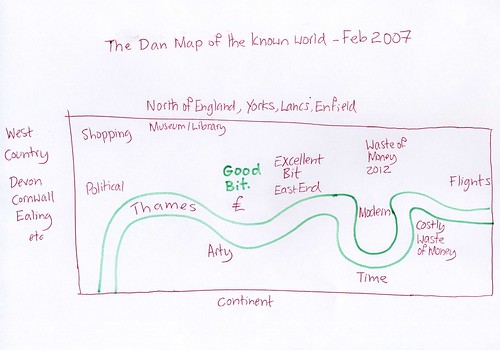Jo's Favorite Books on Esoteric Landscape
In this post, we go down the rabbit hole to investigate the landscapes people see in out-of-body meditations, the landscapes of the paranoid and schizophrenic, and the landscapes of other times and places.
Landscape scholars (like me) spend most of our time writing about (literally) concrete subjects -- like the rise of eminent domain, how railroads connected the nation, or how project housing demoralizes communities.
But somewhere at the bottom of this concern is the fact that landscape is a common structure of consciousness. Everybody sees the common landscape. Right?
Here, in random meditative order, are the most important books that helped me think about what we see when we look at the landscape -- and what we don't see.
 #1 -- Henry Corbin, Spiritual Body and Celestial Earth: From Mazdean Iran to Shi'ite Iran (French title, Terre céleste et corps de résurrection: de l'Iran mazdéen a l'Iran shî'ite, 1960, English version, 1977).
#1 -- Henry Corbin, Spiritual Body and Celestial Earth: From Mazdean Iran to Shi'ite Iran (French title, Terre céleste et corps de résurrection: de l'Iran mazdéen a l'Iran shî'ite, 1960, English version, 1977).Corbin investigates the imaginary geographies of Ancient Persia, where Zoroastrian and Shiite scholars regularly described out-of-body flights through concretely-imagined landscapes. Numerous sheiks describe the same cities and rivers on the other side of death. They agree that this “esoteric” landscape is the concretization of Persian values, imagined as a real space. Acknowledging the concreteness of their perceptions, however, leads them to question whether any part of common experience is not structured by the perception of value.
They speculate about the necessary concreteness, authenticity, and predominance of this world – indeed, that the centers, borders, and sites of importance that we collectively perceive in this world are also another collective dream, a map of our values.
The capital cities and mountains of the real Persia, they suggest, are no less an externalization of Persian values than the map of the Persian afterlife. They agree, then, that this earth is an angel – a collective dream, whose contours we agree on only in the same way that we agree on the contours of imaginary geographies.
Five stars.
What you see, where you go, what places you know to exist, where the borders of the known world lie – all of this is a product of collective dreaming; everything is in the realm of perception, according to the Zoroastrians.
Persian mystics raise heckles among readers who see them as the dreamy commentary of the contemplative soul. This isn't easy going for your standard college graduate. The mystics are so interesting, however, because their out-of-body flights tell them (and us) a great deal about the role of landscape in organizing knowledge.
As Corbin explains, mystic experience depended upon a shared concept of values mapped out in space -- a map of an imaginary world so real that one sheik after another could, it seemed, visit it. Persian mystics claimed to share common visual experiences of their flights through the ether, consistently visiting the same imaginary world in their hallucinations, over hundreds of years. The mystic map of the universe is resilient, Corbin suggests, because place organizes our imagination on an extremely basic level.
This insight about a shared map of value, how it structures what we perceive and what we don't perceived, has been at the root of some of the twentieth century's deepest questions about how consciousness works. Artists, geographers, philosophers, and psychologists have codified the value-laden connotations associated with various places. A continuous trend of collective emotions, values, and ideas associated with place is quite clear. What are these common perceptions of geography, and how are they structured?
In the “Maps from Memory” group on Flickr, artists share their own maps from childhood or from travels in the past.

In addition to those maps of our own heads are maps of collective experience and reckoning. Artists share their diagrams of the known world, and their diagrams of mythic places that never were. What’s so striking about these images is their resonance with a common experience. The “simplified map of London,” for example, deals better with London’s history than many long treatises I know.

So if there are common emotional maps of today’s places, surely there were similar value-geographies of places in the past. And surely the story of how a certain place became important, and what it meant to people, and what they did there, is a subject of immense importance to the cultural historian.
We can name the stories of certain places in history that rose to great importance. The medieval cult of saints and holy wells, for instance, or the pilgrimage to Santiago. Bunyan’s Pilgrim’s Progress and the eighteenth-century road network gave us idea of a path whose destination one shares with strangers. The nation-state as a natural and eternal shape upon the earth is a nineteenth-century landscape. Agorophobia and claustrophobia are constructs of the late nineteenth century. If the map in your mind and the paths your feet work are both the products of collective dreaming, that dreaming still takes place in history.
THE VALUE-LANDSCAPE OF THE ANCIENT WORLD
M. Detienne, The Gardens of Adonis: Spices in Greek Culture -- the entire plant world of Ancient Greece was mapped according to the values and alchemical properties each was said to possess. An immense body of Greek myth refers to designating the position of each plant and each God within this hierarchy of value, from the wet to the dry, the bland to the spicy.
Vidal-Naquet, Pierre. The Black Hunter : Forms of Thought and Forms of Society in the Greek World. Baltimore: Johns Hopkins University Press, 1986. – includes a synoptic map of the Greek city, from the sacred interior to the outside world of barbarians, in between which is the liminal space of the forest, of wild animals, where young boys in puberty are sent to come of age, protecting themselves against beasts, without weapons, before they are allowed to ascend to the places of power in Greek politics.
Tilley, Christopher Y. A Phenomenology of Landscape: Places, Paths, and Monuments, Explorations in Anthropology. Oxford, UK; Providence, R.I.: Berg, 1994. – on monoliths, processional rocks, and observation ledges by the sea in Ancient Britain
Yates, Frances Amelia. The Art of Memory. Chicago,: University of Chicago Press, 1966. – on the memory palaces and memory maps used to organize knowledge of the entire world
VALUE-LANDSCAPES OF THE MODERN WEST
Gaston Bachelard, The Poetics of Space -- Bachelard reviews all of Western literature from the high to the low and excavates the psychological trace of a collectively imagined landscape, where hidden secrets and tunnels are in the basements of all the houses in the world, and ancestors in its attics.
Michael Bakhtin, The Chronotope – Nineteenth- and twentieth-century novels dwell excessively on the landscapes of the gothic (remote castles and houses in ruins where individuals are inextricably connected to the remote past)
Henry Glassie, Passing the Time at Ballymenone – In modern Ireland, the real houses, streets, urban centers, and hills are each intricately connected to an imaginary map of witchcraft, safety, and community.
Paul Carter, Repressed Spaces – Agorophobia was only invented after 1890 when individuals associated with psychology
THE GEOGRAPHICAL THEORY OF VALUE
Quite solid, continuous, and static maps of value exist in the modern world. When people draw a map of a place they used to know, they draw the particular locations that are associated with their own memories. Even modern societies have monuments where the venerate collective memory, central cities where industry is concentrated, and social spaces where they play. A shared social map of the world exists, and divides all the world into political centers, social borderlands, and sites of memory.
Yi-Fu Tuan, Topophilia
Michel de Certeau, The Practice of Everyday Life
THE PSYCHOLOGICAL THEORY OF PLACE
Jung and Reich wonder, what are the archetypal kinds of place and boundary that structure our experience? What primal places characterize the collective imaginary map of the West? Eliade points to the axis mundi, which characterizes every map in the West from the ancient world to the present. There is, they insist, a collective imagination of the geographical world. Reich notices that psychological disorders cause people to hold their bodies differently. Paranoia, for instance, causes the subject to stop perceiving the outside world. What range of ways do we understand our bodies? If there is such a thing as a collective map, there is also a range of individual attitudes towards that map. These collective and individual attitudes structure how we hold our bodies, what we perceive of physical reality, and what we build in the physical environment.
Carl Jung, Aion
Wilhelm Reich, Character Analysis and Orgonomy.
Mircea Eliade, Sacred and Profane
Labels: body, consciousness, geography, history, jung, landscape, mind, place, psychology, reich, space, spirituality










2 Comments:
Jo, I wrote about this (and you!) at
http://subjectandobject.wordpress.com
Please let me know if you find anything in the post objectionable or silly.
Also, I think this may benefit your researches:
http://www.amazon.com/Out-this-World-Otherworldly-Gilgamesh/dp/1570626502
Culianu was a favored protege of Eliade. I own this, should you need to borrow.
--James
I'm a big fan of your blog, it's all about the quality content, keep it up! I want to add you to my blogroll at http://www.gringodownsouth.blogspot.com/ I know it's waaay different than your blog but check it out and let me know what you think, then add me too.
Post a Comment
<< Home